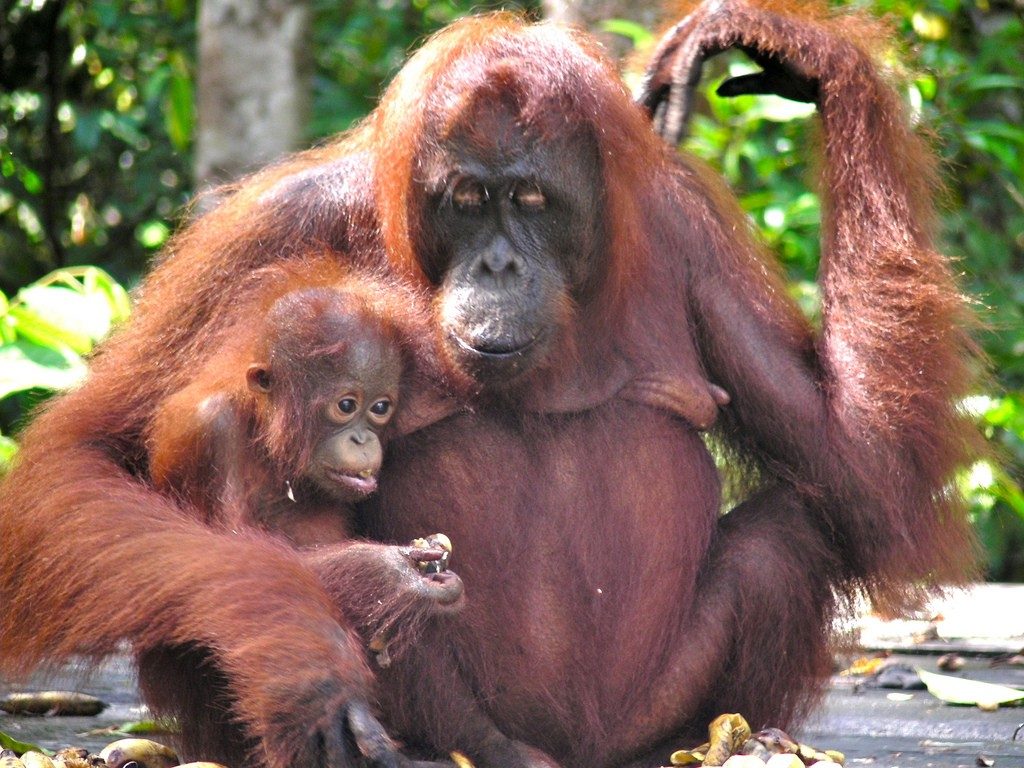Why is palm oil bad?
Palm oil itself is an oil harvested from a resource, yet it is widely blamed as the one of the leading causes of deforestation, along with beef farming, soybean production and timber farming. The world’s consumption of palm oil is vast and ever increasing, as it is found in all manner of products (listed under many names which we will explore later). As an oil, it produces the highest yield per hectare of all other vegetable oils, so there isn’t really a viable alternative; but we do need to find a way to protect future species and forests from further deforestation.
It may seem like a world away, and something we only see in a nature programme, but without them we would be in trouble. Rainforests are essential to our survival; home to many species that are rapidly disappearing. The world’s rainforests provide livelihoods for millions of people in communities across the globe.
The Effects of Palm Oil production
Why are rainforests crucial to life? They keep massive amounts of carbon in the ground and out of our atmosphere, preventing global warming. Along with the nitrogen cycle and the water cycle, the carbon cycle creates a sequence of events that are key to making the Earth capable of sustaining life, and these tropical forests store around 46% of the world’s living terrestrial carbon.
It is not only the canopy of the rainforests that support this life cycle, but also the rich ground beneath; peat is formed in low-lying areas, where dead organic material is unable to fully decompose due to water logging. The partially decayed organic material in the soil is able to withhold water like a sponge, and are an incredibly important storage container of carbon, actually known as carbon sinks. These peatlands are in part being cleared in order to make room for palm oil cultivation causing irreversible environmental, social and economic damage.
After the lands are drained of water, the peat decomposes and easily catches fire, which once burning, releases huge volumes of carbon dioxide into the atmosphere.
Palm Oil – Orangutan
Classified as critically endangered, there are estimated to be only around 15,000 Sumatran Orangutans left within Palm oil deforestation areas. As forests are torn down making room for mining, roads, and Palm oil plantations, the orangutans are increasingly isolated as their groups are split up, leaving them much more vulnerable to poachers, hunters and local conflicts as they resort to raiding the crops (as their habitat and natural food source is reduced). So, whilst a large contributor to the problem, palm oil cultivation is not the only issue for the Orangutans.
Image: https://bit.ly/2Fb7bA5

Sustainable Palm Oil
We are not suggesting the answer is to boycott palm oil; not at all, as that only causes issues of its own. Palm oil is fundamental in providing a livelihood for many, and the environmental damage that exists has already been done. It is about sustainable palm oil moving forward, organisations working together to protect the environment, with strict, monitored protocols in place; ensuring there is a world for future generations to enjoy. Our demand for palm oil is not going to decrease, but if we can manage it to maintain current levels of production, surely it has to help.
Palm Oil Alternatives
A simple decision is where a product can use an alternative to palm oil, choosing to do just that, so ensuring the future demand for palm oil avoids more forests being cut down and more loss of biodiversity. In chocolate this is a straightforward choice, as during it’s processing, the cocoa bean itself provides it’s very own cocoa butter. Interestingly, cocoa butter is used within body lotions, creams and lipsticks. It is ironic to think we take a product out of one to use in another only to have to replace it in the original product with another form of fat!
The question is why do some larger scale chocolates replace the natural cocoa butter with the cheaper palm oil? Cost. Cocoa butter is expensive, and therefore, the palm oil replacement reduces the overall cost of the chocolate. In higher quality chocolate, the naturally occuring cocoa butter is used, so keeping the chocolate in its purest form.
So, it really is a choice we can all make to choose chocolate which only has cocoa butter in the ingredients list, or chocolate which states it is only using sustainably grown palm oil; and in doing so, play our small part to help our planet’s rainforests.
References:
- Study on the environmental impact of palm oil consumption and on
existing sustainability standards For European Commission, DG Environment - European Palm Oil allowance
- Rainforest Action Network
- Orangutan.org
- Rspo.org
- Union of Concerned Scientists
- https://www2.le.ac.uk/departments/geography/research/projects/tropical-peatland/peat-fires

